Marvell is announcing its next-generation DPU platform that will begin shipping later this year. The 5nm Marvell Octeon 10 DPU is designed to bring next-generation capabilities for the PCIe Gen5 generation of systems.
Marvell Octeon 10 400Gbps PCIe Gen5 DPUs
Something that Marvell is highlighting as DPUs have increased in buzz worthiness is that it has been in the DPU market since 2005 coming from the Cavium acquisition heritage.
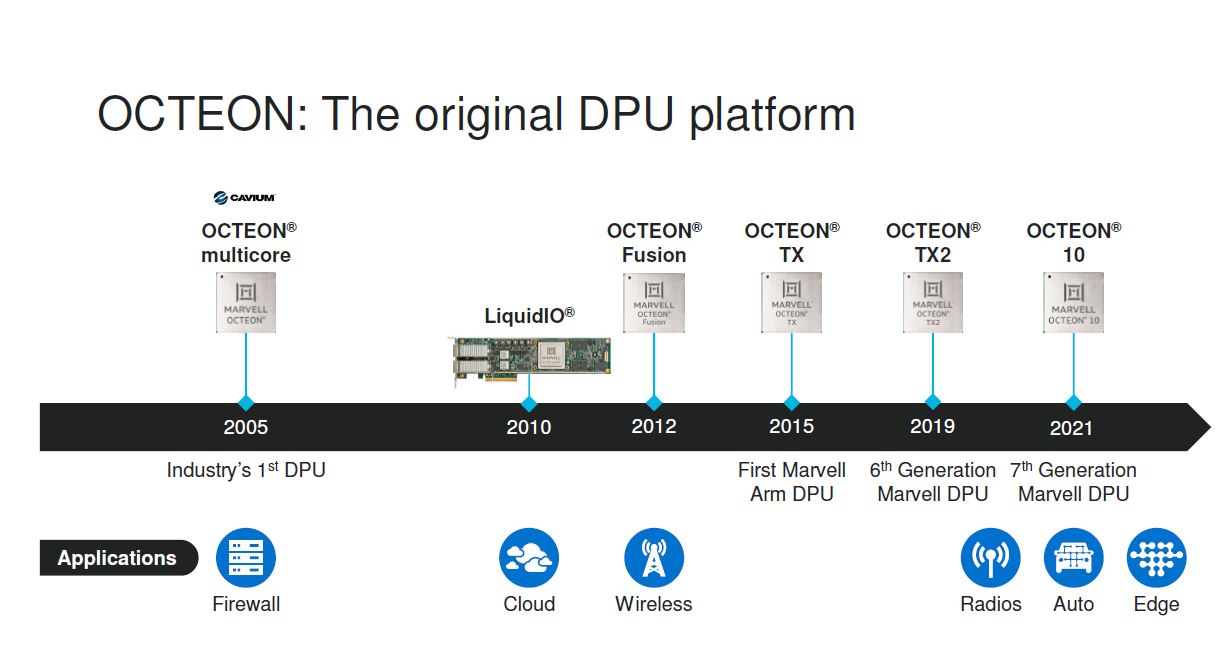
The next-generation platform will offer a much-improved feature set. This includes Arm Neoverse N2 cores as well as hardware acceleration for cryptography, packet processing, and even AI inference acceleration.
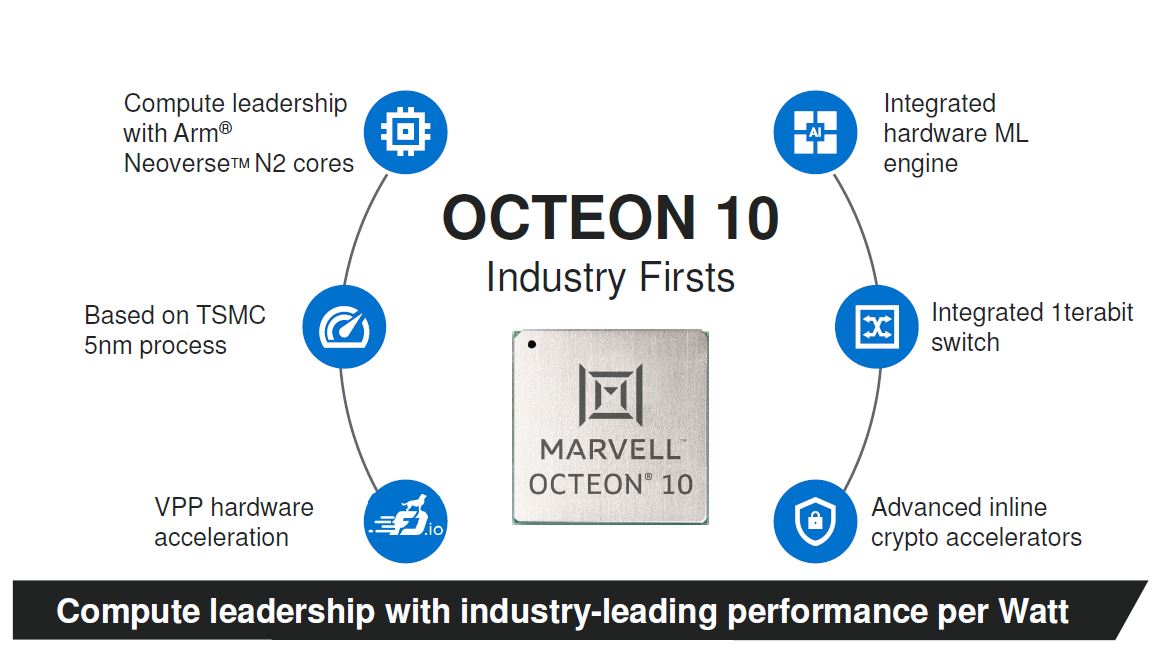
Marvell is clearly showing that it has something that it believes can go head-to-head with NVIDIA BlueField-3. There is an integrated switch that is capable of up to 1Tbps speeds which greatly outpaces the Bluefield-2 200Gbps (2x100Gbps) interfaces we see today. Also, Marvell is using SPECint (2006) here and claiming 1000+ from the Arm Neoverse N2 cores which is well beyond what NVIDIA is offering with BlueField-2.
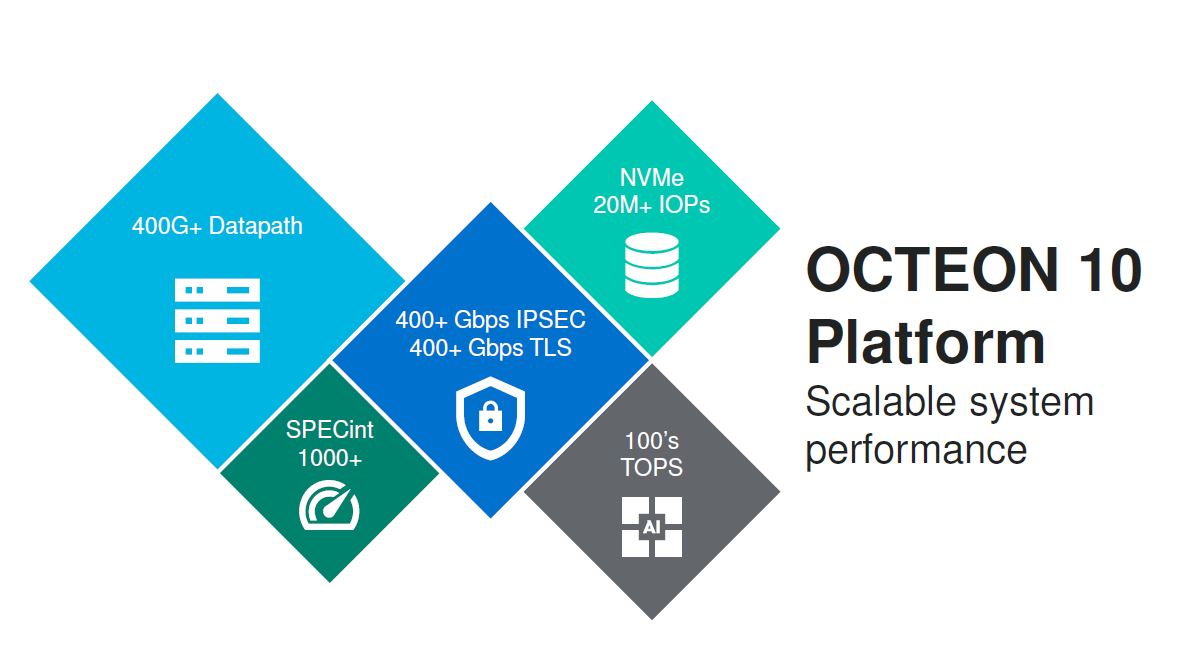
Marvell also is focusing on the software side that we will cover in a bit.
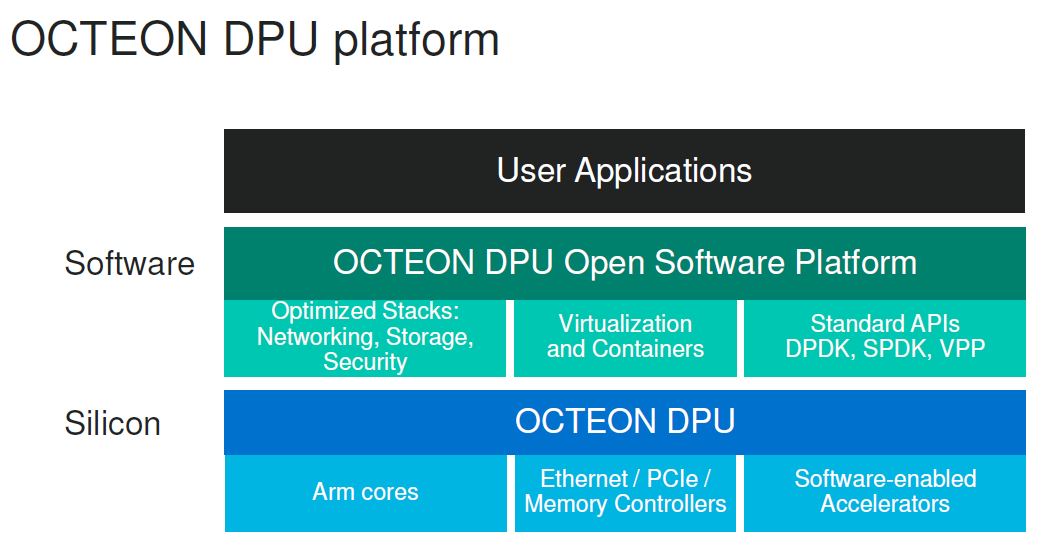
Another big feature is that the new Octeon 10 DPU has DDR5 support since this is going to be in the timeframe of switching to DDR5.
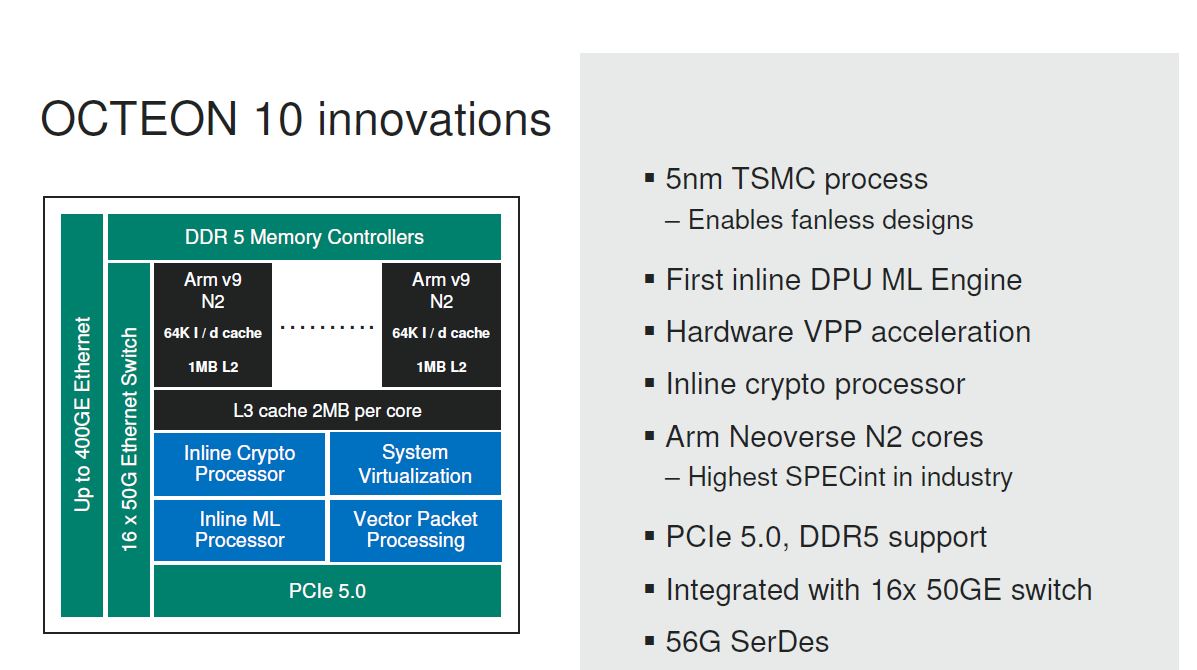
Something that is fun is that Marvell is integrating its “ML engine” which is an AI inferencing accelerator in the DPU itself. The idea here is that many of the key use cases such as running a firewall will utilize AI inferencing so that is in the Octeon DPU. Marvell is not so subtlely trying to beat NVIDIA to the feature here.
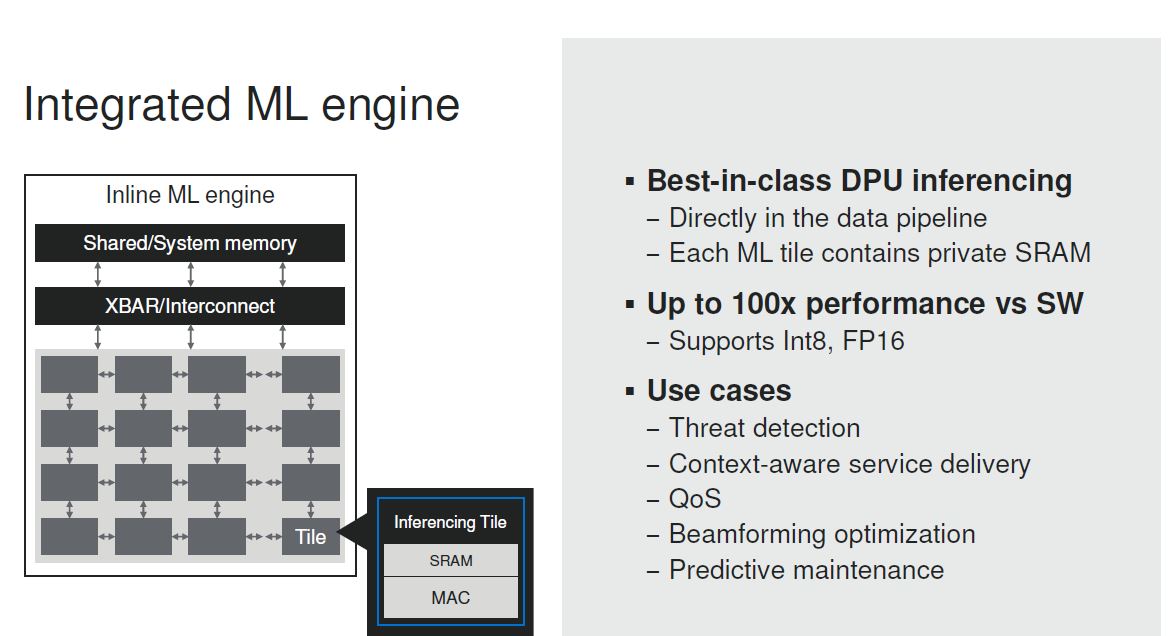
Marvell has a number of accelerators. Since the DPU is about putting capabilities onto the network, vector packet processing is a key feature. VPP is a big topic in the networking industry, especially in the Linux networking community these days so this is likely going to be seen as a big feature.
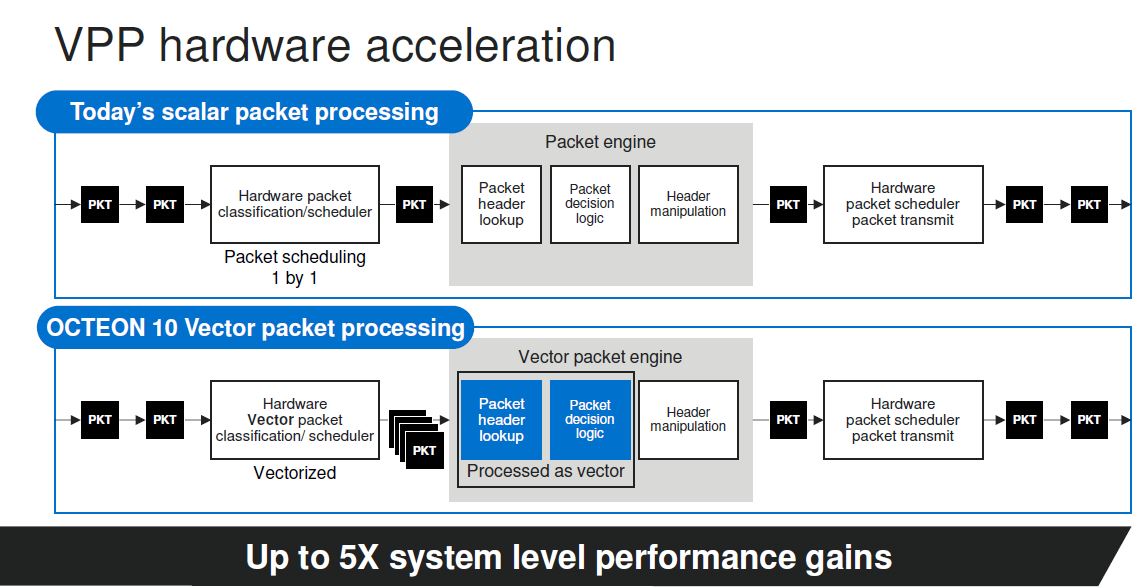
The Neoverse N2 is another big deal. The BlueField-2 Arm A72 cores are a significantly older generation. What is key here is that when NVIDIA was touting the BlueField-4 product in 2020, it was focused on hitting the 1000 SPECint 2006 range. Just to give some context, SPEC CPU2006 has been depreciated for years, but it would be on the range of a Skylake generation Xeon Silver like the Intel Xeon Silver 4114. That really shows how much performance DPUs are set to have. A 2021/2022 DPU will have 2017-era server CPU performance.
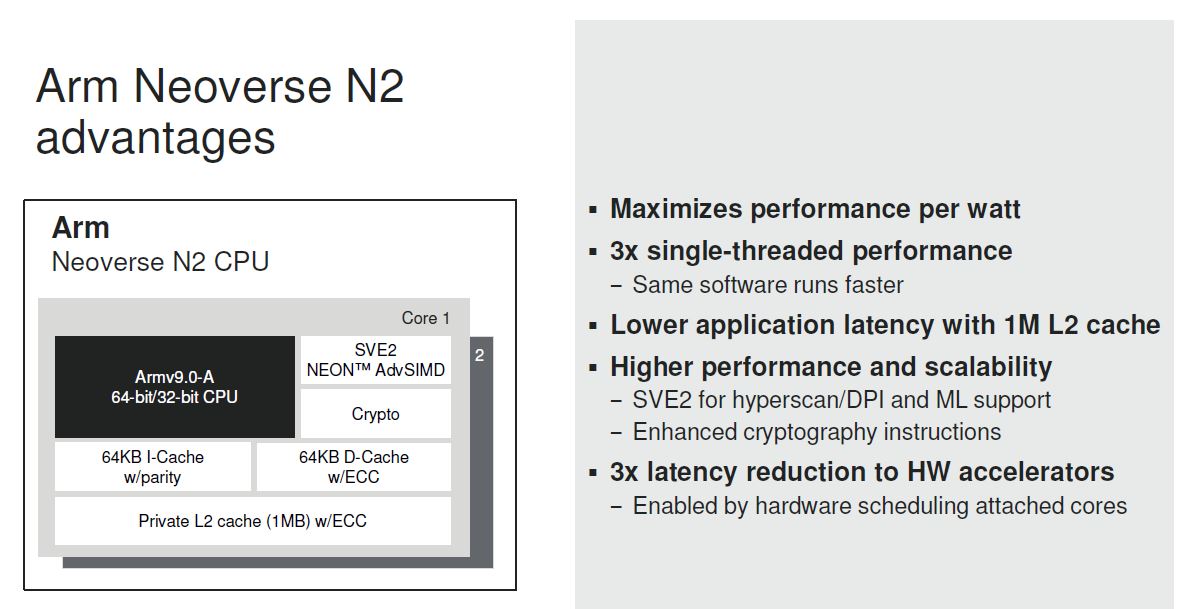
The integrated switch provides for up to 1Tbps and has 16x 50GBE ports plus host ports. This is a big deal since it allows the DPU to be used as part of a solution like an embedded firewall. Not everything will utilize 400GbE networking in 2022 so this provides more flexibility.
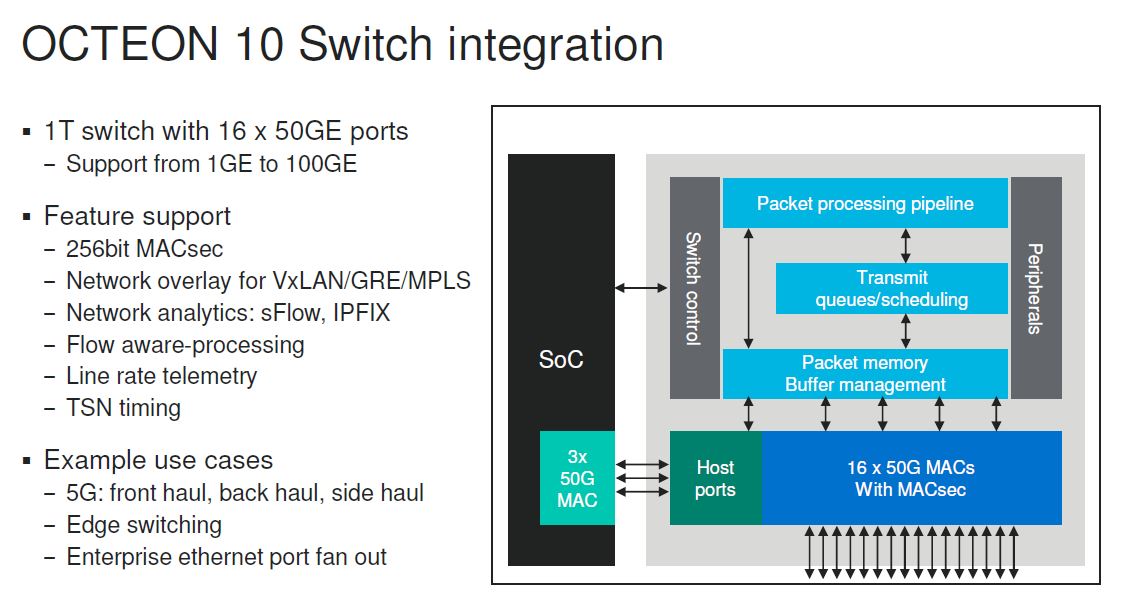
As part of the solution, Marvell is looking at supporting more industry standard platforms while NVIDIA is pushing DOCA. We are still in the early days of DPUs so it will be a while until we see which the industry gravitates to.
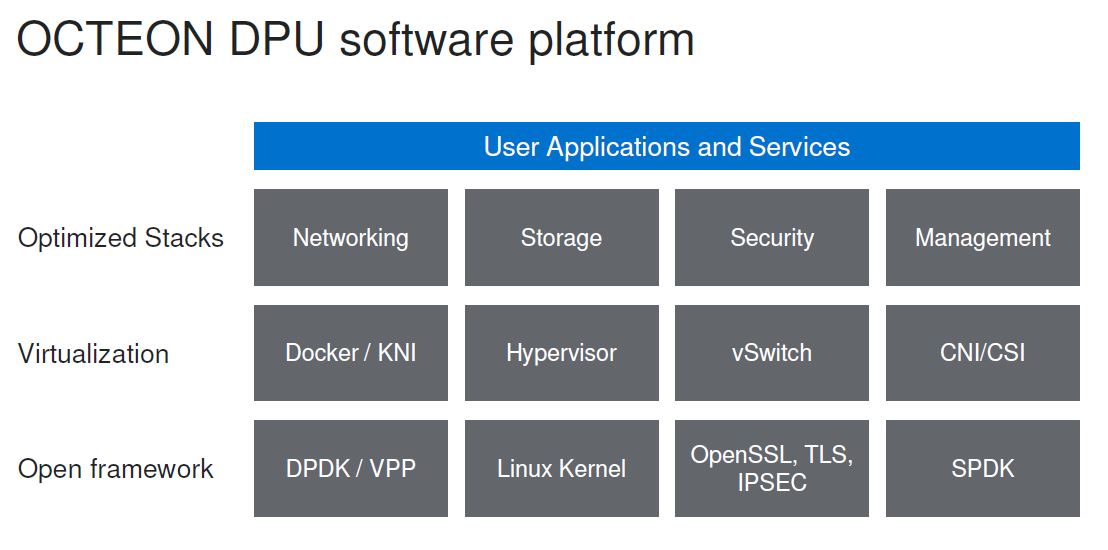
Marvell is supporting virtual functions on the DPU which is something we would expect.
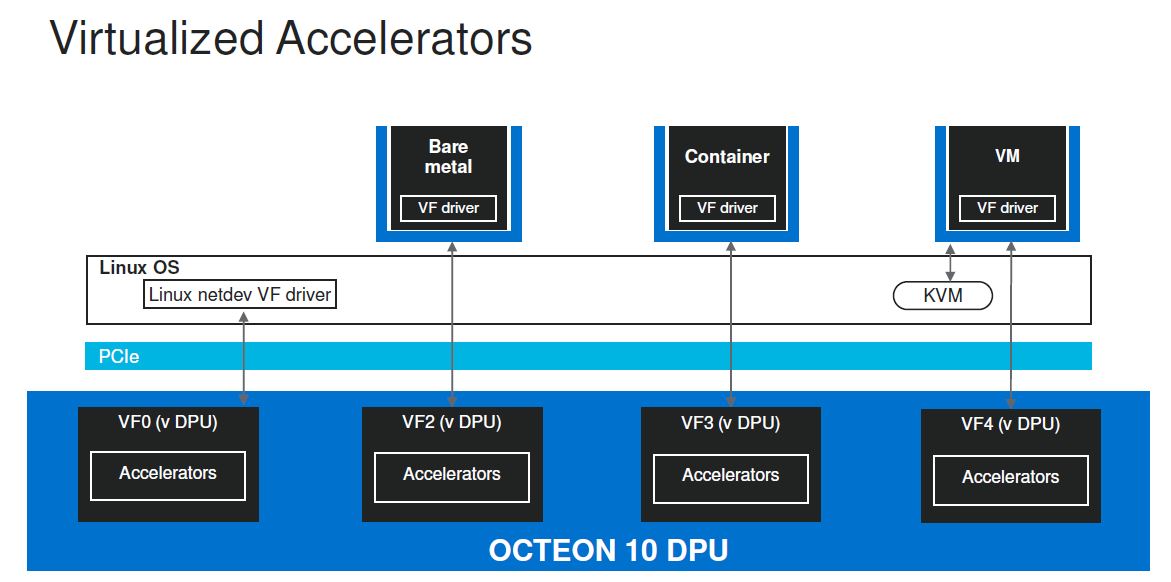
Marvell says its Octeon 10 will allow for service function chaining. Although many DPUs are designed for the cloud and data center market, Octeon TX2 has been selling into markets like the network appliance and 5G ORAN spaces so this type of feature is important.
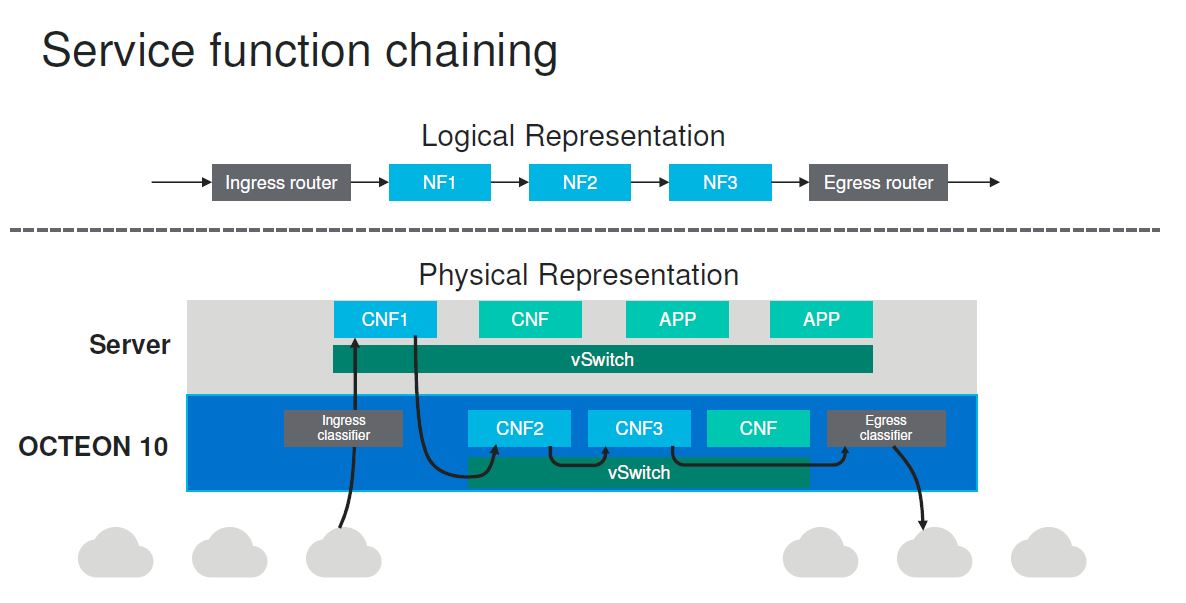
We are not going to go through all of the use cases, but here is one as a cloud/ data center DPU.
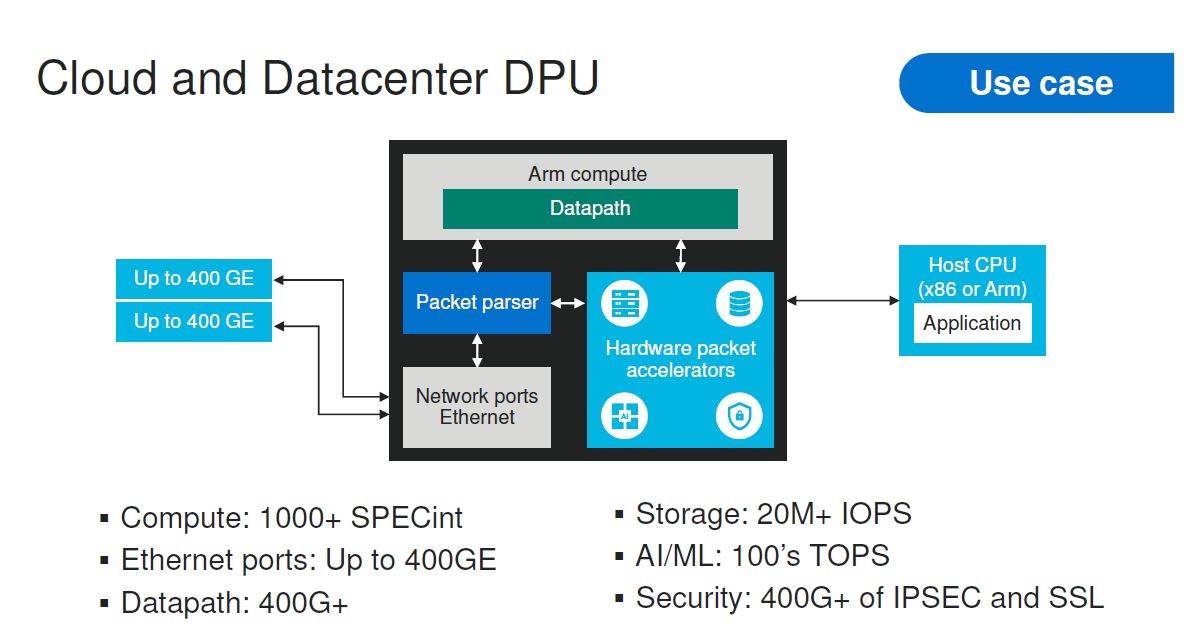
What is quite interesting is that Marvell has a fairly huge range in terms of what it is offering. This is far from a single card solution.
Marvell Octeon 10 DPU Family
First, the Q4 2021 development platform that is a 24 core Arm Neoverse solution. This will only have 2x 100GbE ports but will be a PCIe Gen5 solution with 16GB of DDR5.
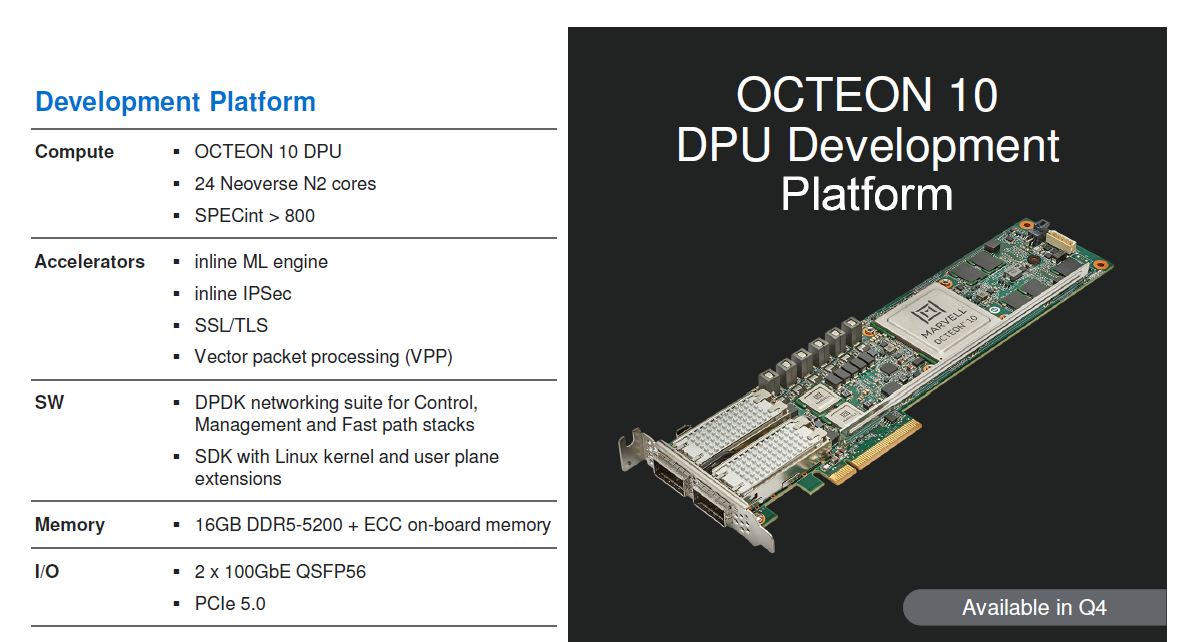
The overall line scales in terms of network port speeds, data path, core counts, and security/ crypto accelerators.
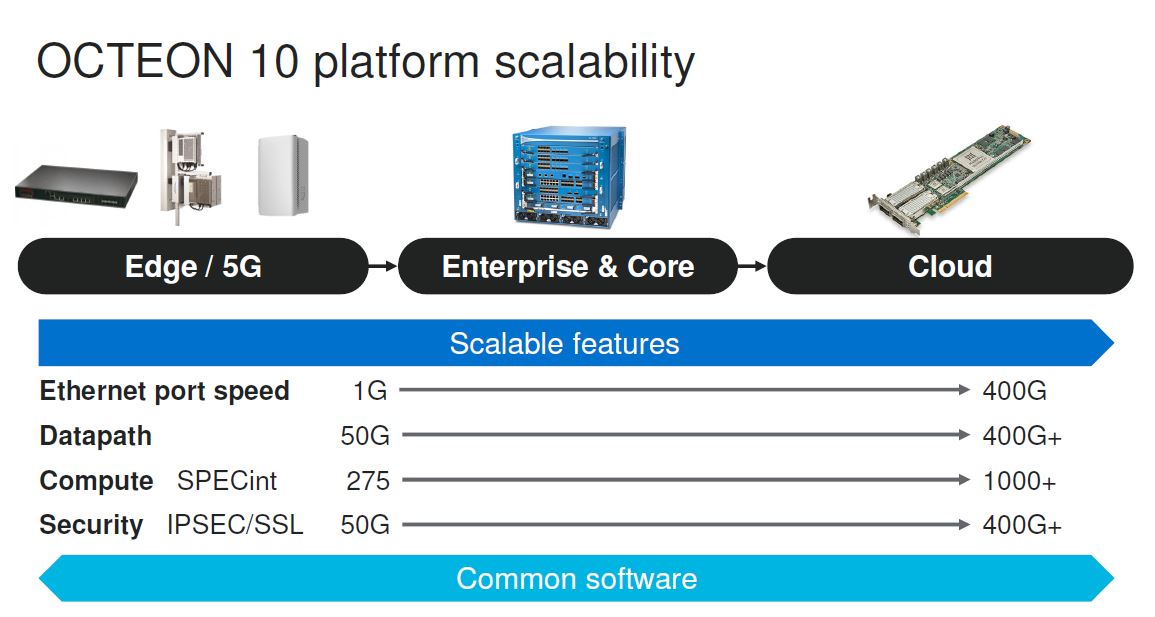
As a result, we the family ranges from lower-end devices in the 25W and lower range all the way up to the DPU400 which is a 36 Arm Neoverse N2 core solution.
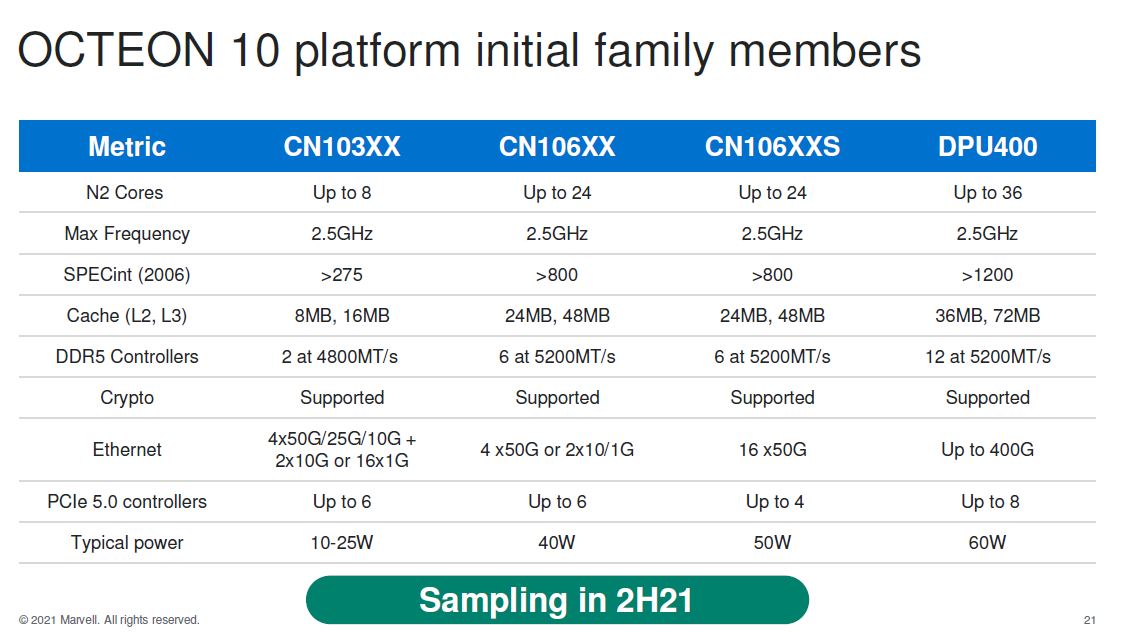
Something to note here is that the SPECint rate for the 36 core solution is being touted as over 1200. That is more like a lower-end Xeon Gold 5100 CPU in terms of performance which is very exciting.
Final Words
Unlike Intel’s exotic IPU‘s designed for organizations with FPGA programming teams, the Marvell Octeon 10 is designed for a range of applications using Arm Neoverse N2 cores and focusing on supporting more of the industry-standard stacks like VPP.
For those wondering about this card versus the Mellanox NVIDIA BlueField-2 DPU we have started to show on STH, the difference is simple: NVIDIA’s is a current-generation part while Marvell is showing its next-gen solution. Also, NVIDIA tends to focus on selling cards while Marvell has been more focused on selling to higher-level integrators. At some point, we think that Marvell will need to adopt NVIDIA’s go-to-market model and start selling higher-level assemblies. Still, this DPU with the Arm Neoverse N2 cores is exciting. The current BlueField-2 DPU cores are certainly not fast.
If you want to learn more about what is a DPU you can see our primer here:
The big question is whether we will see the Octeon products. We have a lot of the BlueField-2 DPUs but given the GTM model, we have not had hands-on with the TX2 yet.

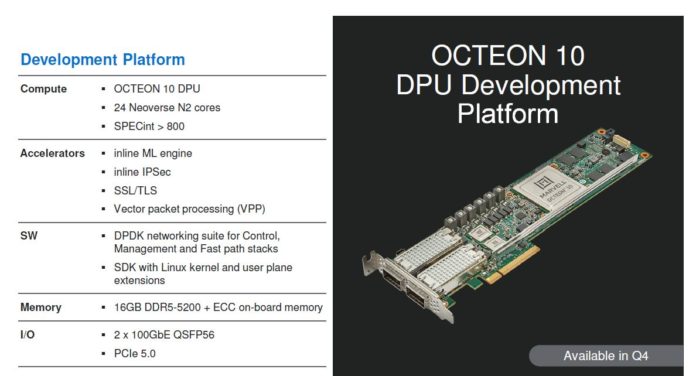



Nicxe write up.
Pretty sure that depreciated was meant to be deprecated here
“Just to give some context, SPEC CPU2006 has been depreciated for years”